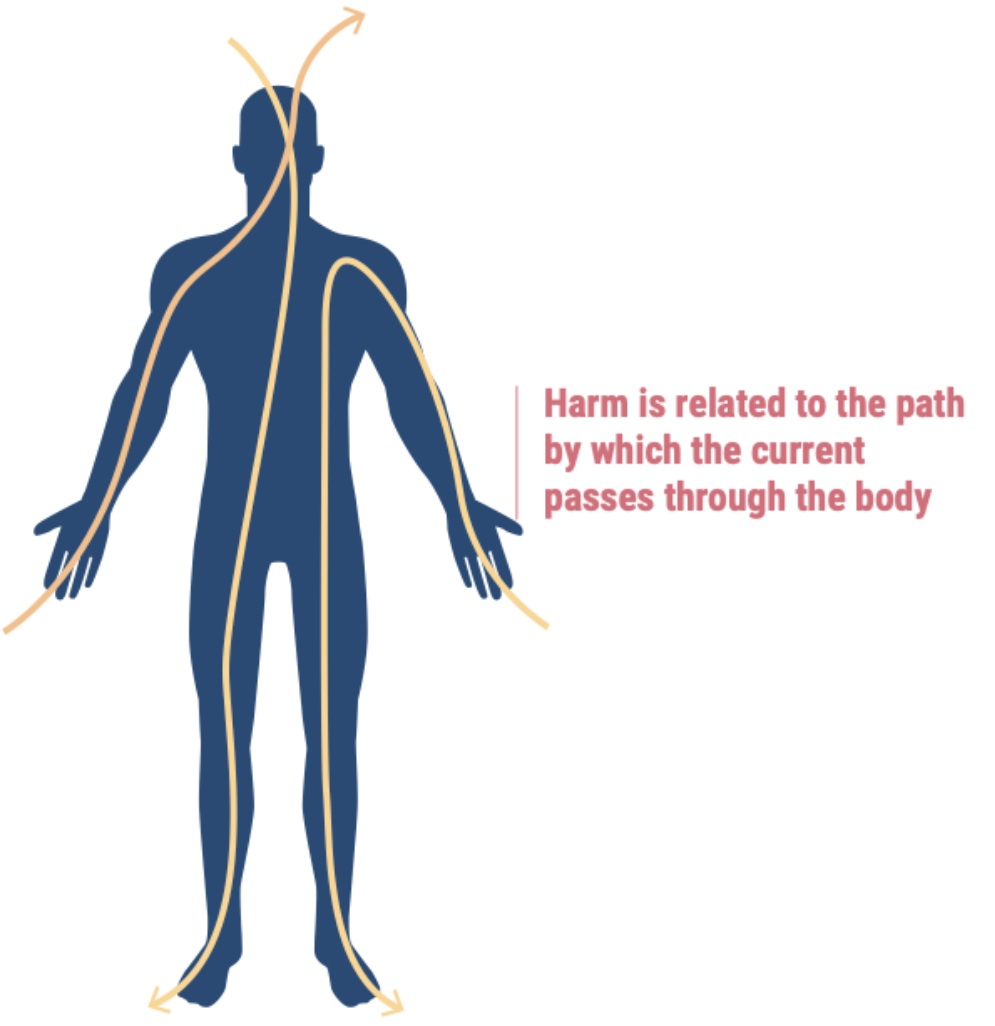Get Tech Tips
Subscribe to free tech tips.
Does Voltage or Amperage Kill You?

I hear the following phrase a lot:
It's the amperage that will kill you, not the voltage.
While there is truth to the statement, it is sort of like saying, “It's the size of the vehicle, not the speed that kills you when it hits you.”
OK, so that's a pretty bad example, but hopefully, it gets the point across. BOTH of them are needed to cause injury or death, and in the case of voltage and amperage, the higher the voltage, the higher the amperage.
This statement about amperage being the real danger has led to many people inaccurately believing it is the size of a panel or the gauge of wire that makes something more or less dangerous—which is 100% incorrect.
Let's take a quick look at OHM's law:
Amps = Volts ÷ Ohms
The resistance (ohms) of the human body depends on many factors, including things like the moisture content of the skin, what other objects the current path is traveling through, which path the current is taking through the body, etc.

While the resistances vary based on these factors, Ohm's law still holds true. When you increase the voltage, you ALSO increase the amperage.
Take a look at this chart from the CDC:

*Effects are for voltages less than about 600 volts. Higher voltages also cause severe burns.
†Differences in muscle and fat content affect the severity of shock.
Let's say that a particular shock is traveling through a 20-kiloohm (20,000-ohm) path in your body.
At 120V, this would produce a 6mA shock.
At 240V, it would be 12mA.
At 480V, it would be 24mA.
It becomes clear pretty quickly that higher voltage does lead to more dangerous shocks, as does the path's resistance.
High Resistance and Low Voltage = Safer
Low Resistance and High Voltage = Danger
This is why working around live electrical should only be done with insulated tools, proper PPE, and in dry conditions. These all serve to keep the resistance up to reduce the likelihood of a fatal shock. The higher the voltage, the more diligent you need to be.
Some people may bring up high voltage shocks from a taser or static electricity as proof that “voltage doesn't kill.”
In these cases, the power supply is either limited, intermittent, or instantaneous. This means that while the voltage is high, it is only high for a very short period. Unfortunately, those sorts of quick high voltage discharges aren't the big danger we face in our profession. Most of the electrical work we do is on systems that will happily fry us to a crisp before the power supply cuts out.
A circuit breaker or fuse will never protect us because we draw in the milliamp range when we are shocked, and almost all fuses or breakers don't trip or blow until much higher levels are reached.
Be safe around high voltage and keep your resistance high.
—Bryan
P.S. – HERE is a guide to electricity and its effects on the heart with some safety tips. Remember, we are NOT an official OSHA safety resource, but we hope you'll find some useful or interesting information in the article.











Comments
A good eye-opener. They teach that amps kills you in trade school. Interesting to see that its both.
A good eye-opener. They teach that amps kills you in trade school. Interesting to see that its both.
Take a 400A, 12V car battery. Unless it falls on your head it won’t kill you. Now, take a 400V, 12A battery and touch the terminals. Ouch! Same wattage, but those amps are coming at you with a lot more force due to the higher force of those amps.
Take a 400A, 12V car battery. Unless it falls on your head it won’t kill you. Now, take a 400V, 12A battery and touch the terminals. Ouch! Same wattage, but those amps are coming at you with a lot more force due to the higher force of those amps.
“When you increase the voltage, you ALSO increase the amperage.” I beg to differ. If you have 100 watts with 50 volts and 2 amps, if you increase the voltage the amperage HAS to go down.
“When you increase the voltage, you ALSO increase the amperage.” I beg to differ. If you have 100 watts with 50 volts and 2 amps, if you increase the voltage the amperage HAS to go down.
To leave a comment, you need to log in.
Log In